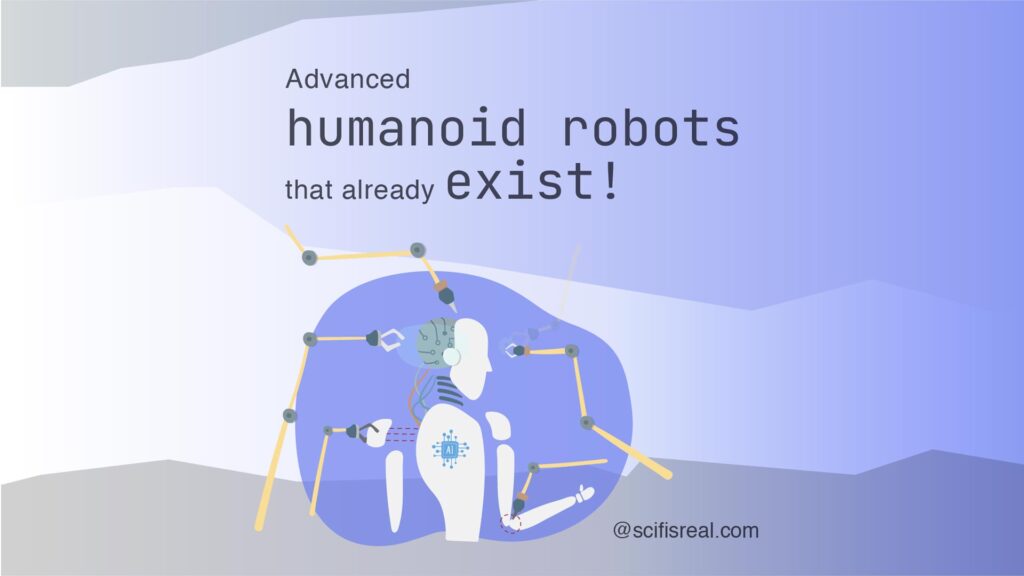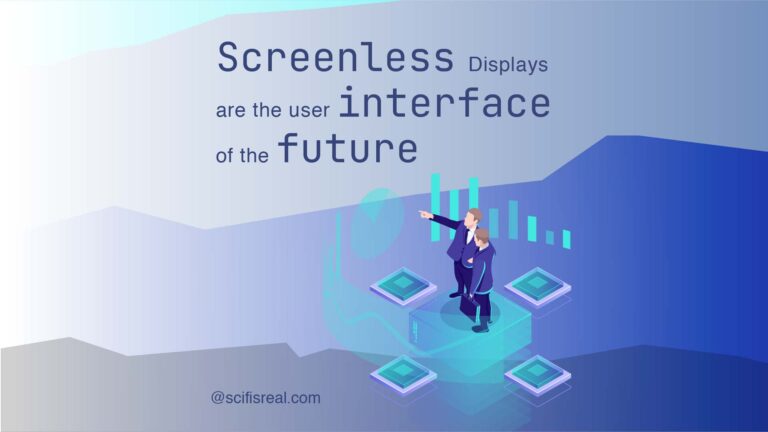Cyborg Humans: the revolution of robotic prosthetics

The concept of robotic prosthetics, cyborg humans, or cybernetic organisms, has long captured the imagination of both science fiction enthusiasts and scientists. While we haven’t quite reached the point of full-fledged cyborg humans yet, there have been significant advancements in the field of robotic prosthetics that are indeed revolutionary.
The integration of these technologies has brought us closer to the vision of “cyborg humans”, where humans and machines work together seamlessly. While there are still many challenges to overcome, such as cost, accessibility, and long-term durability, the field of robotic prosthetics continues to advance rapidly. These advancements offer hope and improved quality of life to individuals who have experienced limb loss or mobility impairments.
Here are some key developments in robotic prosthetics:
Bionic Limbs
Prosthetic limbs have come a long way in recent years. These cutting-edge prosthetic devices can be seamlessly integrated into a user’s body, enhancing their physical capabilities and blurring the boundaries between human and machine. Advanced bionic limbs can be controlled using electrical signals from the user’s muscles, allowing for a more natural and intuitive movement. These prosthetics are often equipped with sensors and microprocessors that enable precise control and feedback.
One of the key components of these robotic prosthetics is their sensory apparatus, which includes a network of sensors and microprocessors. These sensors are strategically placed within the prosthetic limb to monitor a wide array of variables, such as muscle contractions, joint angles, and pressure. These measurements are then processed by the embedded microprocessors, allowing for real-time, data-driven adjustments in the limb’s movement and position.
The result is a prosthetic limb that not only responds to the user’s intended actions but also provides valuable feedback. This feedback loop not only enhances control but also fosters a sense of proprioception, enabling users to develop an instinctive understanding of the prosthetic limb’s position and movement. This combination of intuitive control and sensory feedback brings us closer to the realization of the “cyborg human,” where advanced robotic prosthetics seamlessly integrate with the human body, offering a new level of functionality, mobility, and a more inclusive way of life.
What sets these bionic limbs apart is their ability to harness the electrical signals generated by the user’s muscles, providing a means for natural and intuitive movement. This integration of human signals and machine technology enables users to control their prosthetic limbs with a level of finesse and precision that was once considered science fiction.
Sensory Feedback
Researchers are working on developing prosthetics that can provide sensory feedback to the user. This means that amputees can feel sensations like pressure and temperature through their artificial limbs, enhancing their ability to interact with the world.
The integration of sensory feedback into cyborg human prosthetics marks a transformative advancement in assistive technology. By replicating sensations like touch, pressure, and temperature through artificial limbs, these advanced prosthetics become extensions of the user’s body, enabling a more natural and immersive interaction with the world. This not only enhances physical experiences but also fosters a profound psychological connection between users and their prosthetic limbs, reducing the sense of loss associated with limb amputation. Ultimately, the integration of sensory feedback in cyborg human prosthetics paves the way for a future where individuals with limb loss can experience the world more fully, emphasizing the potential for deeper unity between humans and their prosthetic enhancements.
Brain-Machine Interfaces
Cutting-edge research is being done in the field of brain-machine interfaces (BMIs) that promises to reshape our understanding of human-technology interaction, often referred to as “cyborg technology”. These interfaces allow individuals to control robotic prosthetics directly with their thoughts. While this technology is still in its early stages, it holds great promise for enhancing the capabilities of individuals with limb loss.
Brain-machine interfaces are groundbreaking in their ability to forge a direct connection between the human mind and advanced robotic prosthetics. Users of these interfaces can control their prosthetic limbs simply by thinking about the intended movements. This means that individuals with limb loss can seamlessly and intuitively interact with their artificial limbs, effectively bypassing the limitations of traditional control mechanisms. It’s not just about moving a prosthetic arm or leg; it’s about restoring agency and natural movement to those who have experienced limb loss, thus bridging the gap between human and machine.
While the technology is still in its early stages, the potential it holds is monumental. The prospects of this cutting-edge research extend beyond physical mobility; they encompass a profound transformation of the human experience. Users of BMI-controlled robotic prosthetics can regain a sense of dexterity, independence, and self-expression, leading to a redefined sense of normalcy. It is the promise of returning what was lost and, in some cases, surpassing the abilities of an unaltered human body, thereby embodying the concept of “cyborg technology.”
Additionally, the implications of BMI-controlled prosthetics extend beyond limb loss. This technology could be adapted to assist individuals with other physical impairments and provide novel solutions for enhancing human capabilities. As research in this field continues to advance, we can anticipate greater levels of integration and improved control, reducing the barriers between humans and machines even further.
The development of BMIs is an interdisciplinary endeavor, involving neuroscientists, engineers, and medical professionals worldwide. This global collaborative effort fosters innovation and knowledge sharing, facilitating the progression of these technologies and increasing their accessibility to a broader population.
Exoskeletons
While not exactly prosthetics, exoskeletons are wearable robotic devices that can assist people with mobility impairments. They can be used to help individuals with spinal cord injuries walk or enhance the strength and endurance of soldiers and workers in physically demanding jobs.
Exoskeletons represent another facet of the ongoing transformation towards a future where the line between humans and machines is increasingly blurred, leading us to envision the potential for “cyborg superhumans.” While exoskeletons may not be strictly classified as robotic prosthetics, they are instrumental in augmenting human capabilities, offering an intriguing glimpse into this futuristic vision.
For those with mobility impairments, exoskeletons can be a transformative technology, effectively granting them the ability to walk or move with greater ease. In the case of individuals with spinal cord injuries, exoskeletons can enable them to stand and walk again, offering the potential to regain a degree of independence they might have thought was lost forever. In a sense, these wearable machines turn users into “cyborg superhumans” by restoring lost mobility.
In a military or industrial context, exoskeletons are designed to empower users with superhuman strength, endurance, and resilience. Soldiers can carry heavier loads and traverse challenging terrains, while workers in physically demanding industries can perform tasks with reduced physical strain and fatigue. These wearable exoskeletons enhance human capabilities to superhuman levels, contributing to increased efficiency and safety in various fields.
As technology continues to advance, the future of exoskeletons promises even more seamless integration with the human body. This may include developments such as brain-machine interfaces, allowing users to control exoskeletons with their thoughts, making the connection between human and machine even more profound. The concept of “cyborg superhumans” is not limited to science fiction; exoskeletons are a tangible step towards this vision, offering a promising glimpse into a future where technology empowers individuals to push the boundaries of human potential.
3D Printing technology
3D printing technology has made it easier and more cost-effective to create custom-fitted prosthetic devices. This has opened up new possibilities for more people to access high-quality prosthetics, even in resource-constrained environments.
AI and Machine Learning
Artificial intelligence and machine learning play a crucial role in improving the functionality of robotic prosthetics. These technologies enable devices to adapt to users’ movements, predict their intent, and provide more natural and efficient mobility.
Advanced Materials
The materials used in modern prosthetics have improved significantly. Carbon fiber, for instance, is widely used because it’s lightweight, durable, and has a natural appearance. These materials contribute to the overall comfort and functionality of prosthetic limbs.
Miniaturization and Portability
Prosthetic technology has become more compact and lightweight, making it easier for users to wear and move around with their artificial limbs. This is especially important for prosthetic hand and arm designs, where dexterity and ease of use are critical.
Personalized Prosthetics
3D scanning and printing technologies allow for highly personalized prosthetic devices. Customized fits and designs not only improve comfort but also enhance the aesthetic appearance, helping individuals feel more confident and comfortable with their prosthetic limbs.
Energy-Efficient Design
Many robotic prosthetics now incorporate energy-efficient designs, which are crucial for extending battery life in devices. Advanced control systems and energy recovery mechanisms are used to maximize the endurance of the prosthetic device.
Waterproof Prosthetics
Some prosthetic devices are designed to be waterproof, enabling users to swim and engage in water-related activities without having to remove their limbs. This is a significant improvement in enhancing the functionality and inclusiveness of these devices.
Surgical Techniques
Advances in surgical techniques have made it possible to integrate prosthetic devices more seamlessly with the human body. This includes techniques for osseointegration, where the prosthetic limb is attached directly to the bone, providing better stability and control.
User Training and Support
Rehabilitation programs and support for prosthetic users have improved significantly. Training programs help users adapt to their new prosthetic limbs and maximize their functionality and quality of life.
Affordability
Efforts are being made to make advanced prosthetic technology more affordable and accessible to a broader range of individuals. This includes both high-end prosthetics with cutting-edge technology and more affordable options for those with limited financial resources.
Initiatives and organizations, like e-NABLE, are providing open-source designs for 3D-printed prosthetics, making it possible for people in underserved communities around the world to access prosthetic devices at a much lower cost.
The Global Impact of Robotic Prosthetics
The global impact of advancements in robotic prosthetics extends far beyond individual users. It encompasses changes in healthcare, accessibility, technology, economics, and societal attitudes toward disabilities. These innovations have the potential to improve the lives of countless people worldwide and are helping to redefine the way we think about human-technology integration.
Advances in prosthetics often result from collaborative efforts between researchers, engineers, and healthcare professionals across the globe. This international collaboration accelerates progress and ensures that the best ideas and practices are shared and implemented.
The development and commercialization of robotic prosthetics represent a growing industry. This includes companies specializing in prosthetic technology, medical research, and the wider technology sector. The economic impact is significant, as it creates jobs, fosters innovation, and drives economic growth.
As more people embrace the idea of becoming “cyborgs,” ethical considerations around augmentation, human-technology integration, and the potential for unequal access to these technologies also come to the forefront. This necessitates global discussions on ethics and regulation.
The visible successes of individuals using advanced prosthetics serve as a source of inspiration for young innovators and scientists. It encourages the pursuit of new technologies and novel approaches to assistive devices.











